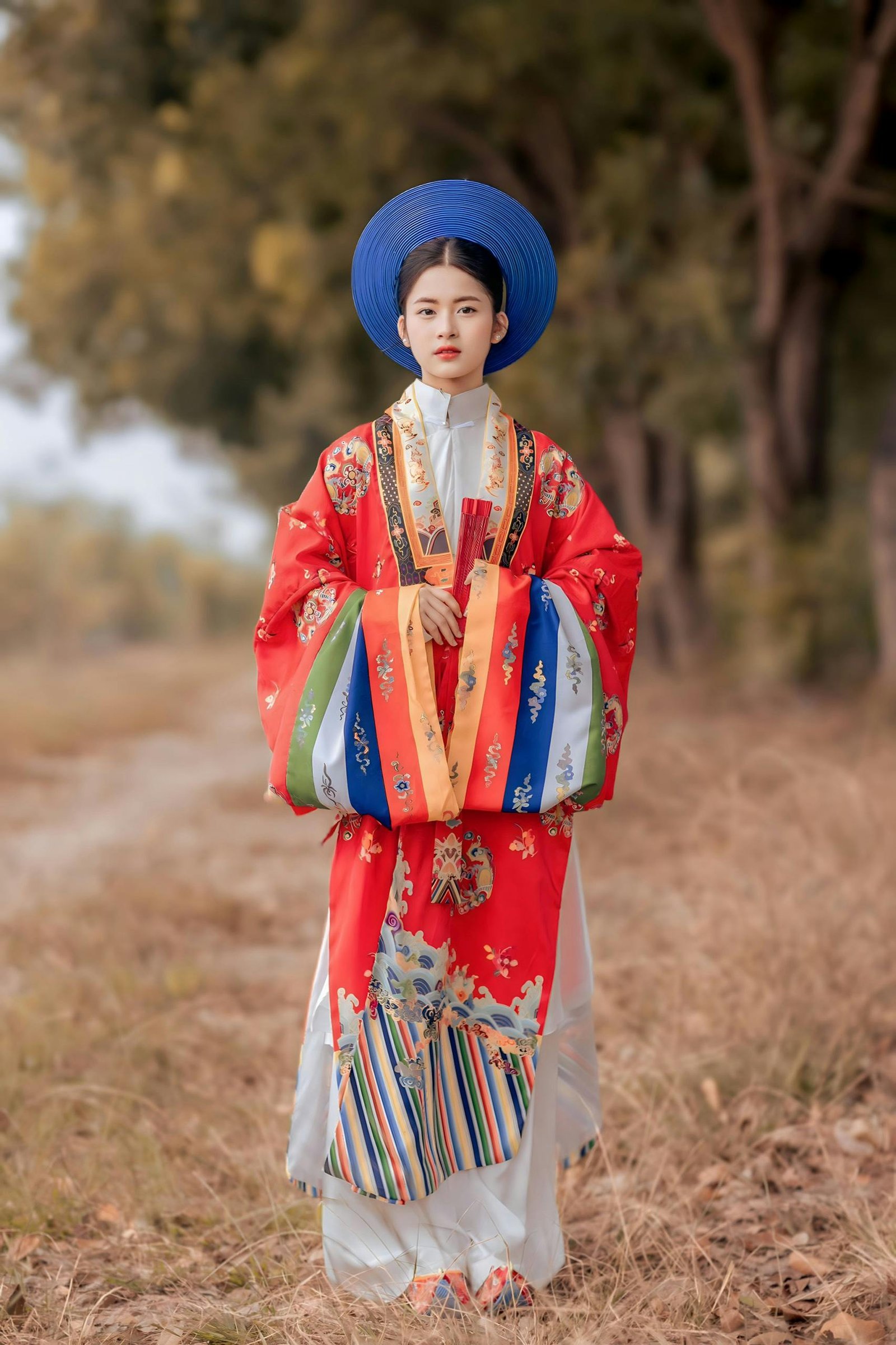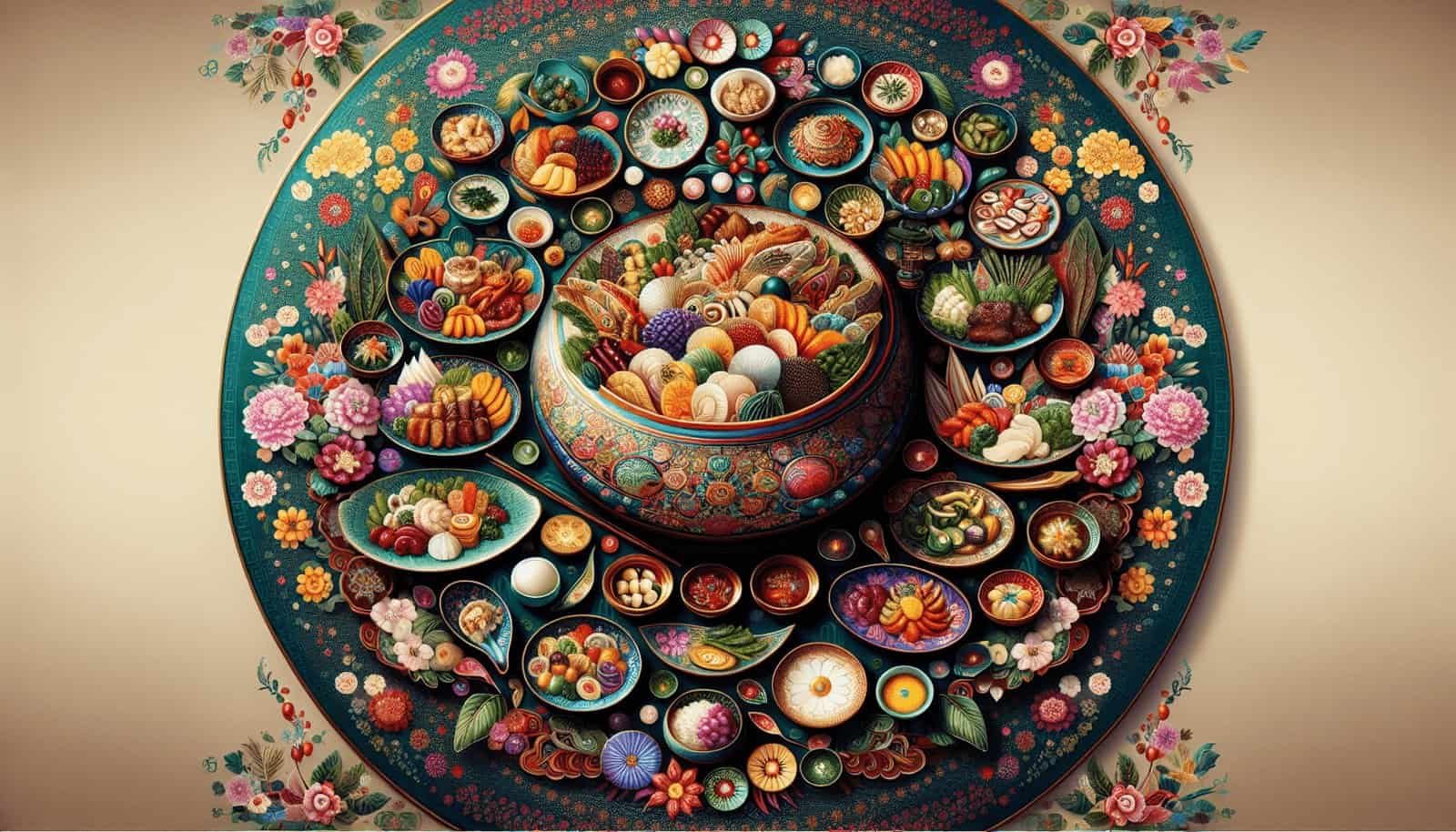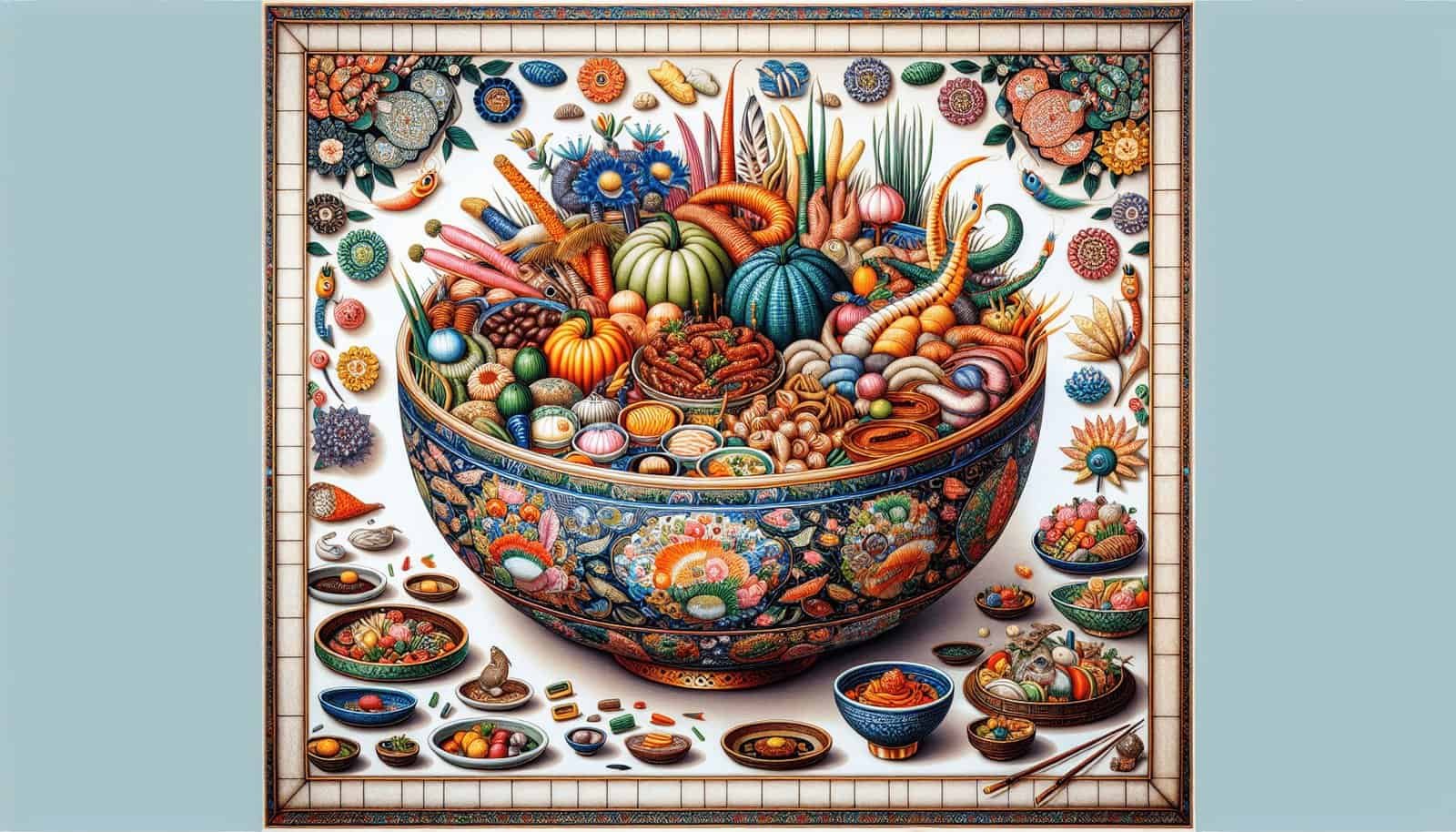Imagine yourself transported back in time to the royal courts of ancient Korea, surrounded by opulent palaces and lavish banquets fit for kings and queens. As you feast on delectable dishes, your curiosity is piqued – where did these culinary traditions originate? In this article, we will delve into the fascinating historical origins of traditional Korean royal court cuisine, tracing its roots from centuries past to the present day. Prepare to be taken on a gastronomic journey through time and culture, as we uncover the secrets behind this revered culinary art form.
Introduction
Overview of traditional Korean royal court cuisine
Korean royal court cuisine, also known as “Hansik,” is a traditional culinary art that developed in the royal palaces of Korea. It has a rich history and is deeply rooted in Korean culture. The cuisine is known for its emphasis on balance, harmony, and aesthetics, both in terms of taste and presentation. Traditional Korean royal court cuisine has been passed down through generations and continues to be cherished as a cultural heritage.
Importance and significance of studying the historical origins
Studying the historical origins of traditional Korean royal court cuisine holds great importance and significance. It allows us to understand the roots of Korean gastronomy and appreciate the complexities and influences that have shaped its development over time. By delving into the past, we gain valuable insights into the cultural, social, and political aspects of Korean history. Studying the historical origins also helps in preserving and promoting this unique culinary tradition for future generations.
Ancient Origins of Korean Cuisine
Origins of Korean culinary traditions
The origins of Korean culinary traditions can be traced back thousands of years to the ancient Korean people. The earliest Korean cuisine was simple and focused on utilizing local ingredients such as rice, vegetables, meat, and seafood. Korean culinary traditions were heavily influenced by the agricultural practices and geographical features of the region.
Influence of Chinese and Mongolian cultures
Chinese and Mongolian cultures have had a profound impact on Korean cuisine throughout history. The Silk Road served as a channel for the exchange of culinary knowledge and ingredients between these regions. Chinese culinary techniques, such as stir-frying and boiling, made their way into Korean kitchens and became integral to Korean cooking. Mongolian influences brought about the use of spices and cooking methods like grilling and stewing.
Development of early Korean cuisine
Early Korean cuisine played a crucial role in the development of Korean society. With advancements in agriculture and technology, cooking techniques evolved, resulting in the creation of a diverse range of dishes. Fermentation, a traditional Korean food preservation method, was developed during this period, giving rise to kimchi, soybean paste, and other fermented foods that are still central to Korean cuisine today.

Royal Court Cuisine during the Three Kingdoms Period
Overview of the Three Kingdoms Period
The Three Kingdoms Period marked a significant era in Korean history, characterized by the three competing kingdoms of Goguryeo, Baekje, and Silla. Each kingdom had its own distinct royal court cuisine. The royal court cuisine during this period set the foundation for the later development of Korean gastronomy.
Introduction of royal court cuisine
It was during the Three Kingdoms Period that the concept of royal court cuisine emerged. The royal families and nobility of Goguryeo, Baekje, and Silla enjoyed lavish feasts prepared with precision and elegance. The royal court cuisine became a symbol of power and sophistication. It was during this time that the formal dining etiquette and elaborate culinary traditions associated with royal court cuisine began to take shape.
Distinctive characteristics and ingredients
The royal court cuisine of the Three Kingdoms Period boasted several distinctive characteristics. The dishes were meticulously prepared, balancing flavors and textures to create harmonious meals. The use of a wide variety of seasonal ingredients, including vegetables, grains, meats, and seafood, contributed to the rich flavors. The royal court cuisine also incorporated a range of seasonings, such as soy sauce, vinegar, and sesame oil, to enhance taste and aroma.
Silla Dynasty and the Evolution of Royal Court Cuisine
Introduction of Buddhism and vegetarianism
During the Silla Dynasty, Buddhism was introduced to Korea, greatly impacting the royal court cuisine. The influence of Buddhist principles led to the adoption of vegetarianism within the royal court. This change in dietary preferences influenced the ingredients and cooking methods used in royal court cuisine. The emphasis on natural flavors and the use of vegetable-based dishes became more prominent.
Refinement and sophistication of ingredients
The Silla Dynasty witnessed a refinement and sophistication of ingredients in royal court cuisine. Exquisite wild vegetables, medicinal herbs, and indigenous plants were incorporated into dishes, contributing to their unique flavors and textures. This period marked advancements in culinary techniques, such as marination and boiling, which enhanced the taste and appearance of the dishes.
Royal banquets and feasts
The Silla Dynasty was known for its extravagant royal banquets and feasts. These grand events showcased the culinary prowess of the royal chefs and served as a means of diplomacy and celebration. The royal banquets were meticulously planned, with each dish carefully selected to create a beautiful and enticing culinary experience. These banquets became a significant cultural practice, showcasing the prestige and sophistication of the Silla Dynasty.

Goryeo Dynasty: Culinary Expansion and Global Influence
Adoption of new cooking techniques
During the Goryeo Dynasty, new cooking techniques were introduced, expanding the culinary repertoire of royal court cuisine. Steaming, pan-frying, and deep-frying methods became popular, adding diversity to the cooking methods employed in the royal kitchens. These techniques allowed for the creation of new flavors and textures, further enriching the royal court cuisine.
Integration of foreign ingredients
The Goryeo Dynasty marked a period of cultural exchange with China and Japan, which impacted royal court cuisine. A wide range of foreign ingredients such as medicinal herbs, spices, and grains were incorporated into Korean dishes. For instance, the use of chili peppers, which originated in the Americas and was introduced to Korea via Japan, became integral to Korean cuisine, including royal court dishes.
Culinary exchanges with China and Japan
Culinary exchanges with China and Japan influenced the development of royal court cuisine during the Goryeo Dynasty. The diplomatic relationships and trade networks facilitated the exchange of culinary knowledge, resulting in the emergence of new dishes and cooking techniques within royal court cuisine. Chinese and Japanese culinary influences brought new flavors and cultural elements to Korean gastronomy.
Joseon Dynasty: Height of Royal Court Cuisine
Social hierarchy and dining culture
The Joseon Dynasty was characterized by strict social hierarchy and elaborate dining culture. The royal court cuisine during this period became highly exclusive, with specific protocols and customs governing meals. The king and the royal family enjoyed elaborate banquets, while noble officials and aristocrats experienced varying levels of dining experiences, based on their ranks. This hierarchical dining culture influenced the evolution of royal court cuisine.
Highly elaborate cooking methods
The Joseon Dynasty witnessed the height of elaboration in cooking methods within the royal court cuisine. Preparation techniques such as double steaming, simmering, and braising were refined and perfected. These methods ensured that the dishes were not only delicious but also visually appealing. The use of unique cooking utensils and tableware added to the elegance of the dining experience.
Prominent royal court dishes
During the Joseon Dynasty, several iconic dishes emerged within royal court cuisine. “Sinseollo,” a hot pot dish consisting of various meats, vegetables, and mushrooms, was a favorite among the royal family. “Jeon,” a type of Korean pancake, was another popular dish served during royal banquets. These dishes showcased the culinary mastery and innovation that prevailed during this period.

Modern Era: Preservation and Revival of Royal Court Cuisine
Impact of Japanese colonial rule
The modern era of Korean history was marked by the Japanese colonial rule, which had a significant impact on traditional Korean royal court cuisine. During this time, Korean culture and cuisine faced suppression, and many traditional recipes were lost or altered. The occupation led to a decline in the prominence of royal court cuisine, as the focus shifted towards survival and resistance.
Efforts to preserve traditional recipes
In the aftermath of the Japanese colonial rule, efforts were made to preserve and revive traditional Korean royal court cuisine. Dedicated individuals and organizations worked tirelessly to document and reconstruct the lost recipes. Archival research, interviews with surviving descendants of royal chefs, and analyzing historical records played a crucial role in piecing together the puzzle of traditional royal court cuisine.
Popularization of royal court cuisine
In recent years, there has been a surge in the popularity of traditional Korean royal court cuisine. Restaurants specializing in this culinary art have emerged, attracting locals and tourists alike. The revitalization of royal court cuisine has rekindled interest in Korean gastronomy, encouraging the younger generation to appreciate and learn about the historical origins and cultural significance of traditional Korean cuisine.
Influences and Adaptations in Contemporary Korean Cuisine
Incorporation of royal court cuisine in modern dishes
Contemporary Korean cuisine has incorporated elements and techniques from traditional royal court cuisine. Traditional ingredients and cooking methods are often used as a foundation for creating innovative dishes with a modern twist. Chefs draw inspiration from the rich heritage of royal court cuisine while experimenting with flavors, textures, and presentations to cater to evolving tastes.
Influence on Korean food culture
Traditional Korean royal court cuisine has had a profound influence on Korean food culture as a whole. Many of the techniques, ingredients, and philosophies found in royal court cuisine have become deeply ingrained in everyday Korean cooking. The emphasis on seasonality, presentation, and the balance of flavors remains central to Korean gastronomy, bridging the gap between past and present.
Exportation and promotion of Korean cuisine
The global popularity of Korean cuisine, including traditional royal court cuisine, has seen a significant increase in recent years. Korean restaurants and food festivals can now be found in various parts of the world, spreading awareness and appreciation for Korean gastronomy. The promotion of Korean cuisine as a cultural asset has contributed to its recognition as an essential component of global culinary diversity.

Royal Court Cuisine Today: Heritage and Celebration
Royal court cuisine as cultural heritage
Traditional Korean royal court cuisine is recognized as an invaluable cultural heritage of Korea. With its historical significance and rich culinary traditions, it is a source of national pride and identity. The preservation and promotion of royal court cuisine ensure that this remarkable chapter of Korean history continues to be celebrated and appreciated by generations to come.
Special occasions and ceremonial meals
Today, royal court cuisine is often reserved for special occasions and ceremonial meals. It is served during important events such as royal weddings, state banquets, and cultural festivities. These meals, meticulously prepared and presented, showcase the elegance and sophistication associated with royal court cuisine and provide a glimpse into the past.
Cooking classes and cultural experiences
To further promote traditional Korean royal court cuisine, cooking classes and cultural experiences have become increasingly popular. Visitors and locals alike have the opportunity to learn about the history, techniques, and ingredients used in royal court cuisine. These hands-on experiences provide a deeper understanding and appreciation for this culinary art form.
Conclusion
In conclusion, the study of the historical origins of traditional Korean royal court cuisine offers us insights into the development and significance of Korean gastronomy. From its ancient origins to the evolution and adaptation in contemporary times, royal court cuisine reflects the cultural heritage and influences that have shaped Korean culinary traditions. By appreciating and preserving this culinary art, we celebrate the cultural significance and legacy of traditional Korean royal court cuisine.

